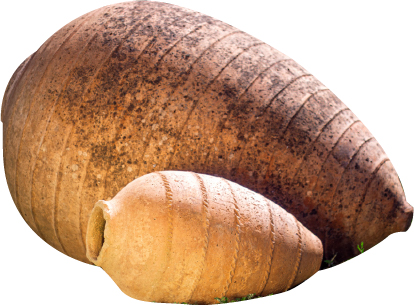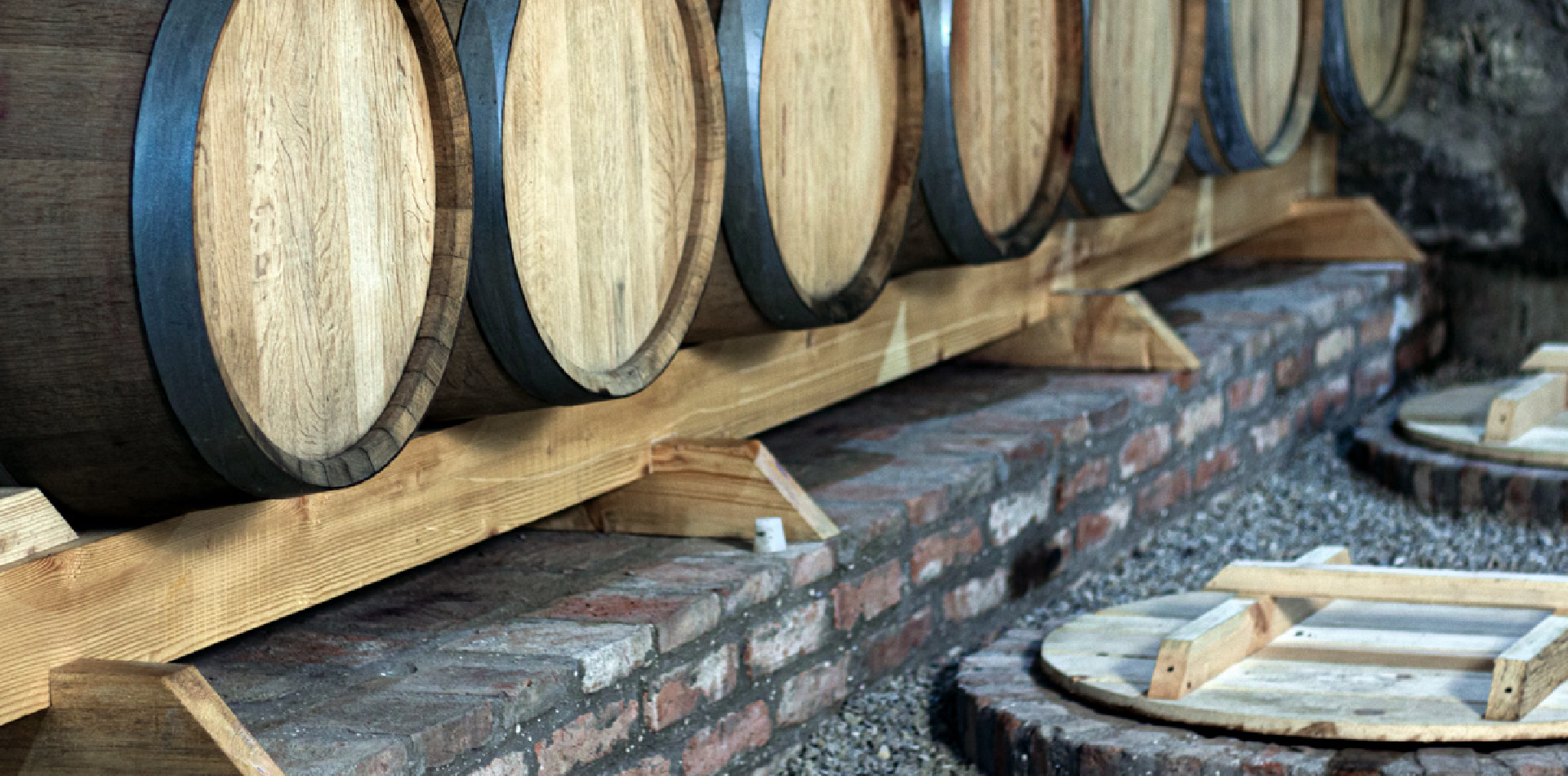Technology
Since immemorial time Georgia has been considered the “cradle of wine production”. As a result of archeological excavations, the grape pips have been discovered on the territory of Georgia, which were about 8000 years old. Viticulture – is an integral part of Georgian history. It is amazing that in the XIth century at Ikalto Academy (Eastern Georgia, Kakheti).
Making wine in Qvevri requires a lot of hard work, faith in work, love and responsibility to ancestors or the future generations. That is why the warmth of the sun rays is spilled from the color of the Kakhetian Qvevri wine.
When making wine in Qvevri using Kakhetian method, the grapes are processed in Qvevri with grape skins, pips and stems. After alcoholic fermentation, white wine is aged during 7-8 months on grape skins and pips, while red wine is aged during 3-4 months.
To receive real Kakhetian Qvevri wine, the grape should be harvested well ripened. It is also necessary to ripen stems, which are expressed in receiving amber color.
In the traditional method, the grapes are placed in winepress and crushed.
Winepress – is a large vessel for treading and pressing grapes. It was made of lime, chestnut, elm, hazelnut, and oak trees. Previously, it was carved in stone and rock.
The ancient rock-cut winepress dates back to the Hellenistic period (Uplistsikhe, Zenith). It is also found in the early and middle feudal eras.
When pressing grapes in winepress, the grape juice is poured into Qvevri. After fermentation in the air, wine dregs and stems are added.
When making wine in Qvevri using Kakhetian method, the grapes are processed in Qvevri with grape skins, pips and stems. After alcoholic fermentation, white wine is aged during 7-8 months on grape skins and pips, while red wine is aged during 3-4 months.
To receive real Kakhetian Qvevri wine, the grape should be harvested well ripened. It is also necessary to ripen stems, which are expressed in receiving amber color.
In the traditional method, the grapes are placed in winepress and crushed.
Winepress – is a large vessel for treading and pressing grapes. It was made of lime, chestnut, elm, hazelnut, and oak trees. Previously, it was carved in stone and rock.
The ancient rock-cut winepress dates back to the Hellenistic period (Uplistsikhe, Zenith). It is also found in the early and middle feudal eras.
When pressing grapes in winepress, the grape juice is poured into Qvevri. After fermentation in the air, wine dregs and stems are added.
After the fermentation of wine dregs is over, grape skins and pips release carbon dioxide and settles on the bottom of the vessel. The upper part of Qvevri is occupied by wine material. If necessary, the vessel is filled with the same content wine and Qvevri is non-hermetically sealed with valve. After 3-4 days, the throat of Qvevri is treated with sulfur smoke and the valve is sealed hermetically.
After wine gets taste, color and body from the strong parts of the bunch, the grape skins and pips are removed.
First, the pure fraction, which is placed in the middle of Qvevri on the top of grape skins and pips, is decanted in other Qvevri, where begins wine maturation period. Wine attains its unique properties, characteristic aroma and taste.
During maturation period takes place permanent laboratory and organoleptic control of wines. Attention is paid to the process development and wine quality.
The matured wines are bottled and sealed with corks. Wine continues its development in glass bottles. The more time passes, the better becomes the taste of wine, the better bouquet is formed, it becomes softer and more pleasant to drink.
After wine gets taste, color and body from the strong parts of the bunch, the grape skins and pips are removed.
First, the pure fraction, which is placed in the middle of Qvevri on the top of grape skins and pips, is decanted in other Qvevri, where begins wine maturation period. Wine attains its unique properties, characteristic aroma and taste.
During maturation period takes place permanent laboratory and organoleptic control of wines. Attention is paid to the process development and wine quality.
The matured wines are bottled and sealed with corks. Wine continues its development in glass bottles. The more time passes, the better becomes the taste of wine, the better bouquet is formed, it becomes softer and more pleasant to drink.

